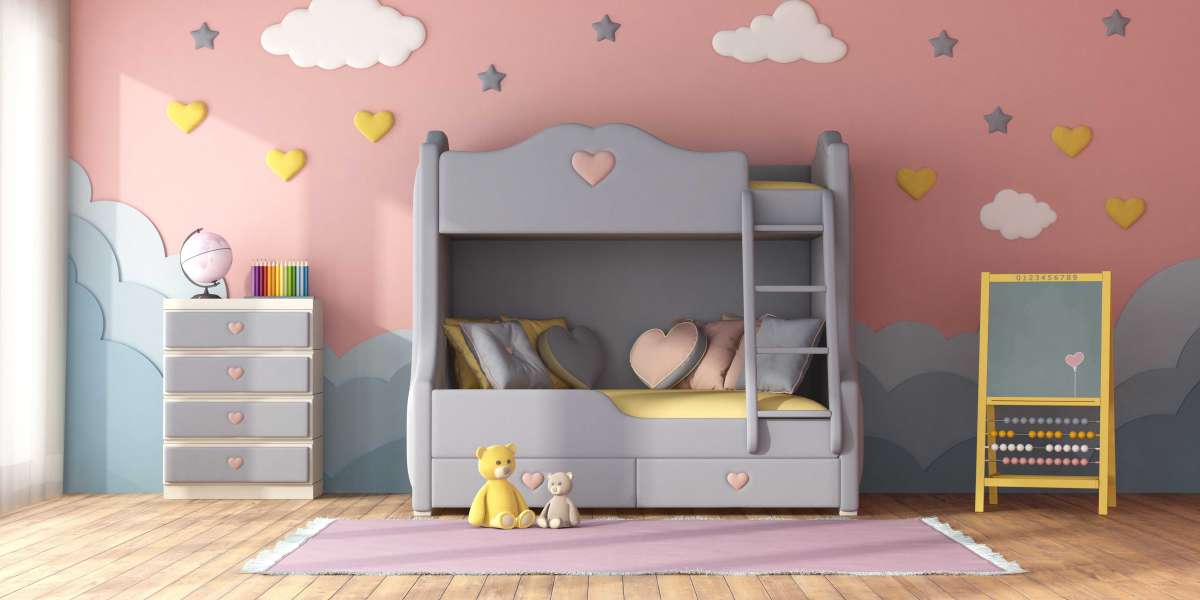How to Select the Best Bunk Bed
When you are looking to purchase bunk beds for your kids there are some things you need to consider. Size materials, quality and safety are all important factors.
It is also important to take into consideration the age and weight of your child. Some bunk beds are made for younger kids, while others are suitable for teens or even adults.
Size
Bunk beds are versatile pieces of furniture that can serve as a sleeping space for two children or guests. They are available in a variety of sizes and configurations, including queen, full, twin and king. They also provide storage beneath the bottom bunk for extra bedding or toys.
Deciding on the right size is crucial as it determines the amount of space you will be able to save in your kids' bedrooms. Measure your room and its ceiling height to determine the ideal size.
Consider the capacity of the bunk bed's weight capacity. These weight limits are important to consider as many models have limitations on how much they will support. If your bunk bed is too heavy for the frame, it could pose safety issues for your sleeping guests on the bottom or top bunks.
A mattress that is comfortable will give your child the best sleep. It must be firm and comfortable for your child, yet soft enough to cushion them. Depending on the weight of your child and height, you may choose an extra-firm or medium-firm mattress.
The thickness of your mattress for bunk beds is another factor to keep in mind. In general mattresses that are thicker may be too heavy to fit into bunk beds. They could also pose a safety risk on the upper bunks.
You may also opt for an even thinner mattress than standard beds in order to give your child more headroom when they are on the top bunk. A thinner mattress will also give them more room to move about in their sleeping.
If you're looking for the best bunk bed for a small space, you should consider the Storkcraft Solid hardwood ladder Twin Bunk Bed. It's a charming farmhouse-inspired style, and is made of solid wood to ensure it's sturdy.
It's simple to construct, and can be converted into three separate freestanding beds. It's also available in a range of colors, allowing you to mix it in with the rest of your room's decor. The curved and wagon-themed guardrails and headboards add a nice flair.
Material
If you're thinking of purchasing a bunk bed it is important to think about the materials used. While the most commonly used types of bunk beds are constructed from tubular metal, it is also possible to find models that make use of solid bars for strength and safety. However, they are heavier in weight and might not work in smaller spaces.
Another aspect to consider is color. An ideal option is to select a bunk bed that blends with the rest of your bedroom furniture and complements your current color scheme. You'll save money by not having to alter everything when your children get older and move to a different room.
For instance, a gray bunk bed could look elegant and sophisticated in a male-only bedroom. It can also look great with white-on-white rooms. It adds interest to the space without sacrificing its neutral appeal.
The best bunk beds are crafted from top-quality materials, like veneers and hardwoods. This ensures that they last for a long time and are durable.
When paired with a quality mattress, the most comfortable bunk beds can help you save space in the bedroom of your children and increase their sleeping comfort. They are also safe for children of all age.
Aside from that the bunks can also be disassembled into two separate beds as your child ages and needs to share a bedroom with friends. A hidden trundle also glides out from underneath the bunk's bottom, allowing additional sleeping space for guests or siblings.
If you're planning to buy bunk beds it is important to ensure that the model is suitable for your kids' age and size. If your kid is an teen then it is best to opt for a larger model with an elegant design and rails on the sides.
It is important to check if the bunk beds usa bed has frames made of metal or solid wooden. A metal frame is less vulnerable to breakage and damage which is why you should choose one.
Also, ensure you select a bunk bed that is easy to assemble. Some require you to put together them from scratch, while others are partially assembled.
Safety
Many people are concerned about the safety of bunk beds, however an analysis from the past shows that this type of bed is not as risky as many think. Statistics show that falls are the source of many injuries. However, most of them are not enough serious to warrant immediate medical attention.
If your kids are using bunk beds, make sure to speak with them about safety rules to ensure they are aware of how to use it safely and avoid getting hurt. Bed injuries in bunk beds can include bumps, bruises, and broken bones.
The most important bunk safety tip for bed is to make sure that the top bunk has guardrails. The rails should rise at least 5 inches over the mattress, and have an opening that is not more than 15 inches. The rails must be attached to the mattress using fasteners which must be released for removal. They should also be at least five inches above the mattress's foundation.
A third important bunk bed safety tip involves making sure that there aren't any gaps or openings that could cause small children to become trapped or fall through. These can be as simple as holes in the top or sides of the bed, or as elaborate as a gap between two walls.
It is risky to climb up and down the ladder at night. Installing an emergency lighting near the ladder will help make it safer. It can be plugged in or powered by batteries, based on your layout and is an easy way to ensure the safety of your children while they try to get into and out of the top bunk.
Other bunk bed safety tips includes limiting the number people to sleep in the bunk bed to one and taking away all personal items from the bed. Letting things like belts, scarves or jump ropes on the bed could be extremely dangerous and could cause strangulation.
In addition to a bunk bed, your child's room should also include a nightlight in case they wake up in the middle of the night to go to the bathroom. This will assist them in finding their way in the dark without getting lost or injuring themselves.
Style
Bunk beds are an extremely popular choice for children's rooms, but they're also useful in other areas. They are a cost-effective way to offer more space for adults or guests. Whether you're buying a bunk bed for your kids or yourself Here are some guidelines to help you choose the most suitable one:
Determine the amount of space you require. This will determine the size of the bunk bed as well as its duration. If you have a large family, you might opt for an extra large size to ensure that all your children can fit in comfortably.
The age of your child is an additional aspect to take into consideration. A younger child may need an easier, safer bunk bed. An older child may prefer a larger bed that has more room. The proper size bed will allow your child to sleep comfortably and securely.
In addition, the type of mattress you choose can affect the quality of your bunk bed. For example, an upholstered mattress might be more durable and less likely to wear out quickly.
Lastly, take the capacity of your bunk bed into account, too. Poorly-constructed models can be dangerous for the people who sleep in both beds. Make sure the model you choose meets the weight limit that is recommended for your bed.
While you're shopping, check the product description for recommendations for safety features. In addition to the obvious guardrails, you should also search for side rails with a maximum of 3.5 inches between gaps and less than 15 inches at each end.
Certain bunk beds have additional security features, such as a sliding-door that prevents unauthorized entry to the top bunk. This is a great option for parents who have children who constantly get up and down from their beds.
Lastly, a bunk bed with an underbed trundle or storage drawers can be a fantastic option for any room. These types of beds are particularly useful for teenagers who need more sleeping space or a place to store their stuff and complete their assignments.





